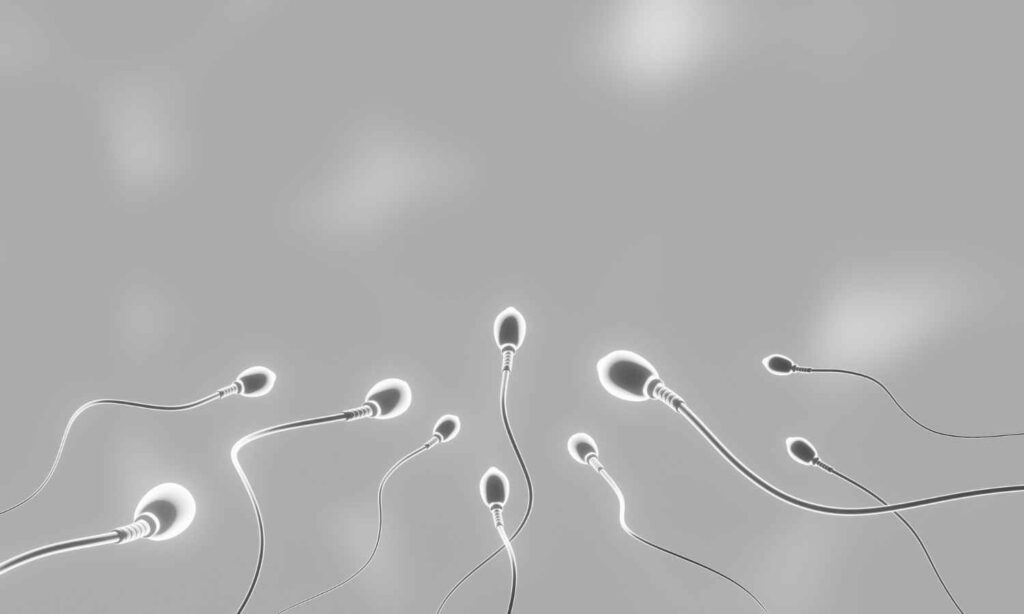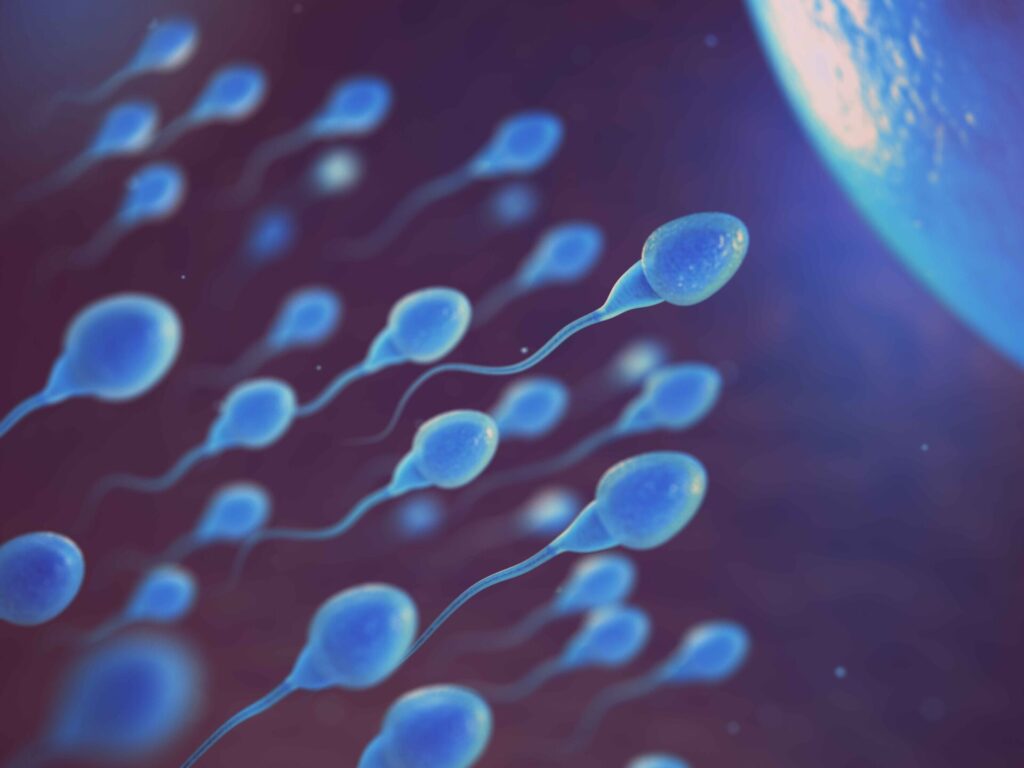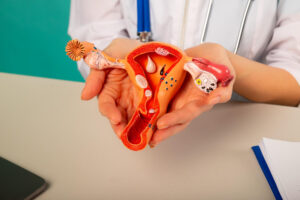How long does sperm live inside a woman? This question is one of the most searched by couples trying to conceive or practising natural birth control. Understanding the lifespan of sperm inside the female reproductive tract is essential for anyone trying to plan or prevent pregnancy. The answer may surprise you—sperm can live up to five days inside a woman under optimal conditions. But several biological and environmental factors influence this survival window.
In this comprehensive guide, we’ll break down the science behind sperm survival, what affects its lifespan, and how you can use this information to boost your chances of getting pregnant or avoiding it.
What Happens to Sperm After Ejaculation?
The Journey Begins
When ejaculation occurs during vaginal intercourse, millions of sperm are deposited near the cervix. From there, they begin an extraordinary journey through the uterus and into the fallopian tubes in search of an egg.
- Only the strongest survive: Of the 200-300 million sperm released, only a few hundred make it to the fallopian tubes.
- Timing is crucial: Fertilisation can only occur if a mature egg is present.
How Long Does Sperm Live Inside a Woman?
Average Lifespan
How long does sperm live inside a woman? Typically, sperm can survive for 3 to 5 days in the female reproductive tract, depending on the environment and fertility conditions.
Key Points:
- In ideal cervical mucus (produced around ovulation), sperm can live up to 5 days.
- Outside of the fertile window, sperm usually survive only 1 to 2 days.
- If deposited on external surfaces (like hands or sheets), sperm die within minutes.
Factors That Influence Sperm Survival Inside a Woman
1. Cervical Mucus Quality
The most crucial factor affecting sperm lifespan is the type of cervical mucus.
- Fertile mucus (egg white consistency): Nourishes and protects sperm, allowing them to live longer.
- Non-fertile mucus: Thick and acidic, making it difficult for sperm to survive.
2. Ovulation Timing
Sperm have the best chance of surviving and fertilizing an egg if they are present in the reproductive tract just before or during ovulation.
3. pH Levels
Sperm thrive in a slightly alkaline environment (pH 7.0 — 8.5). Vaginal pH is usually acidic (around 4.5), but it becomes more alkaline around ovulation to support sperm survival.
4. Sperm Health and Quality
Stronger, healthier sperm are more likely to survive longer inside the reproductive tract.
- Healthy lifestyle habits boost sperm quality.
- Factors such as smoking, alcohol and stress negatively impact sperm longevity.

Can You Get Pregnant Days After Intercourse?
Yes, you can. Because sperm can live inside a woman for up to five days, having sex several days before ovulation can still result in pregnancy. This is why understanding the fertile window is so important.
Fertile Window Breakdown:
| Day of Cycle | Fertility Status |
| Day 1–9 | Low fertility |
| Day 10–14 | High fertility (ovulation) |
| Day 15–28 | Low fertility |
Sperm Survival in Special Cases
1. During Menstruation
Although rare, it’s possible to get pregnant during your period, especially if you have a short cycle and sperm survive for several days.
2. With Fertility Treatments
During procedures like IUI (Intrauterine Insemination) or IVF, sperm are placed closer to the egg, minimizing the time and environmental challenges.
3. Withdrawal Method and Pre-ejaculate Fluid
Even pre-cum can contain sperm and if it reaches the vagina, there’s a slight chance of sperm surviving and fertilizing an egg.
How to Maximize Sperm Longevity for Pregnancy
If you’re trying to conceive, you’ll want to create the most sperm-friendly environment possible. Here’s how:
Track Ovulation
- Use ovulation kits, BBT charts, or fertility apps.
- The time of intercourse is 1–2 days before ovulation.
Maintain Vaginal pH Balance.
- Avoid douching or using chemical-based feminine hygiene products.
- Eat a balanced diet rich in antioxidants.
Encourage Sperm Health
- Men should reduce alcohol, quit smoking, and wear loose underwear.
- Take zinc, folic acid, and vitamin E supplements.
Myths About Sperm Lifespan
Myth #1: Sperm dies instantly after ejaculation.
Not true. Inside the right environment, sperm can survive up to 5 days.
Myth #2: You can’t get pregnant right after your period.
Sperm survival combined with a short menstrual cycle can make this possible.
Myth #3: All sperm in pre-ejaculate fluid is harmless.
Even a small amount of sperm in pre-cum can result in pregnancy.

Natural Contraception Based on Sperm Lifespan
Understanding how long sperm live inside a woman helps with natural family planning. The Fertility Awareness Method (FAM) involves:
- Monitoring ovulation signs.
- Avoiding intercourse or using protection during the fertile window.
FAM is:
- Free of hormones
- Highly effective if done correctly
- But requires consistency and education
Quick Recap: Sperm Lifespan Inside a Woman
| Condition | Average Sperm Lifespan |
| Ideal cervical mucus (ovulation) | Up to 5 days |
| Non-fertile days | 1–2 days |
| External environment | A few minutes |
| Pre-ejaculate fluid | Varies (but viable sperm may exist) |
Conclusion: Use Sperm Lifespan to Empower Your Fertility Journey
Understanding how long sperm live inside a woman is a game-changer, whether you’re trying to conceive naturally or avoid pregnancy. With this knowledge, you can accurately time intercourse, boost your chances of getting pregnant or practice natural contraception more effectively.
Track your cycle
Optimize your lifestyle
Time intercourse wisely
Whether you’re planning for a baby or trying to prevent one, knowledge is your best ally. If you’re struggling with fertility, consider speaking with a specialist for further guidance.
Need Personalized Fertility Support?
If you’re looking for expert fertility care, The Boon IVF in Hyderabad is here to help. Our experienced team offers cutting-edge treatments, compassionate care and customized fertility plans to give you the best chance of success.
Book your consultation today and take the first step toward your fertility journey with confidence


